If you have employees at your business, you will handle payroll on a regular basis. You will also need to record your payroll expenses in your invoicing software to balance your accounting records. In this article, I will describe how payroll works, and how to accurately record it with HMRC, and Debitoor invoicing software.
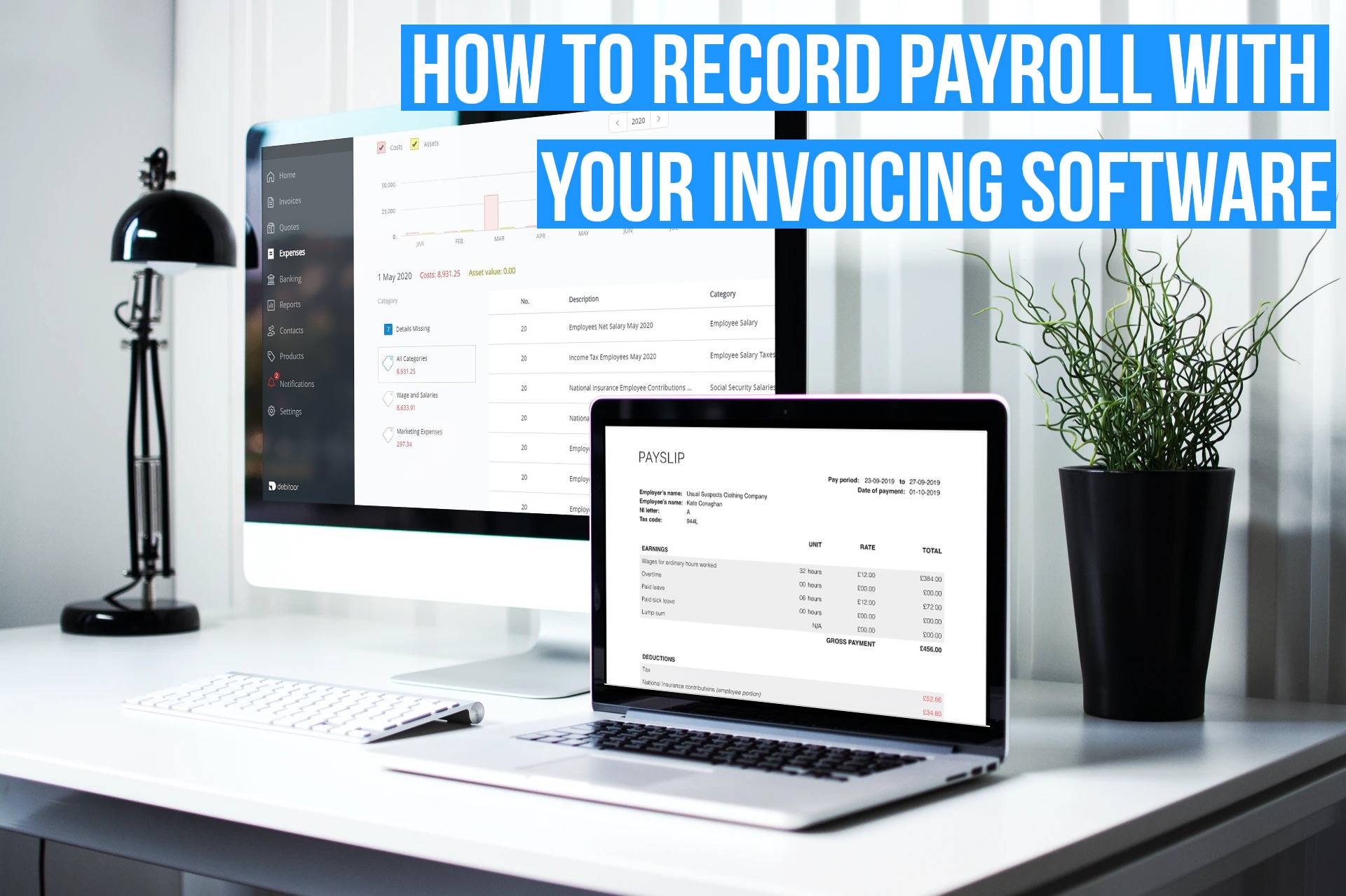
What is payroll accounting?
Payroll is the amount a business spends to pay its employees. It refers to all expenses that occur when paying employees, including salaries and wages, benefits, commission, and bonuses. Payroll can change every month due to overtime, sick leave, holidays, and commission.
Payroll accounting refers to recording payroll expenses for accounting purposes. It is important to keep a detailed record of all expenses and payments to keep track of your company’s finances.
Payroll and tax
When you issue payslips to employees, there will be deductions such as income tax and national insurance contributions. These are taxes paid directly to the government from each employees earnings.
The income tax amount depends on the tax code of each employee, and the amount of income they earn. Employees tax codes may change if their income or salary increases or decreases. Income tax is used to fund public services such as education and the NHS.
National Insurance contributions are a tax used toward certain state benefits, such as maternity leave, sick leave, and pension. The contribution amount may fluctuate each month as it corresponds to how much you earn in each pay period. If you earn more income one month, you will contribute more to National Insurance.
National Insurance includes employee and employer contributions. It is mandatory that both parties contribute a certain amount unless the employee makes less than £183 a week.
If the employee earns between £183 to £962 per week, they will contribute 12% to National Insurance, and the employer will pay 13.8%. If you earn more than £962 per week, then you will pay a different percentage of your income.
Both of these taxes are deducted from an employees pay before the net amount is paid out to the employee.
How to record payroll on your invoicing software
With invoicing software, not only can you create and send invoices and quotes, but you can also record your payroll expenses! Its accounting functionalities allow you to sort through your expenses and gain a better understanding of how much your business is paying to employees, and in taxes.
If you use Debitoor invoicing software, you can record your payroll data quickly and easily as an expense. If you have several employees, you just need to create one expense with different parameters for all aspects of your payroll.
It is not necessary to create separate expenses per employee, or per item (salary, taxes, bonus, etc.) because it will not affect your accounting.
Once you have issued your pay and payslips to your employees and the government, log in to Debitoor and go to the ‘Expenses’ tab. Then, select ‘New Expense’.
In this section, you can enter several different items under one expense, to include salary, income tax, and National Insurance contributions.
You can enter the details from reviewing the information from your payroll software, or from the PAYE online system.
In Debitoor, you can allocate each item as a different category. Here is a list of payroll categories that you can select, including net salaries, employee taxes, social security contributions, and sick leave pay.
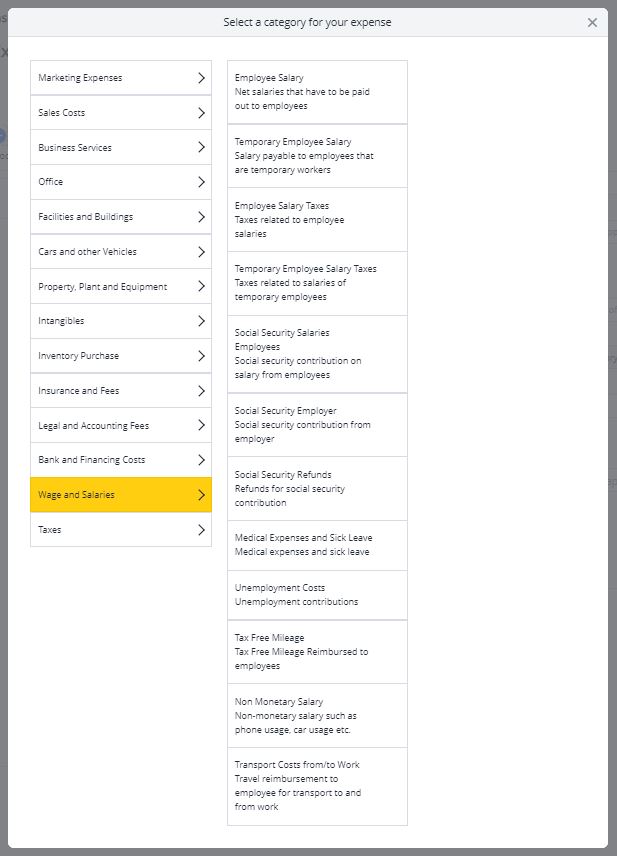
When recording your payroll expenses with Debitoor, I would start with the obvious. I would input the total net salary paid to all of your employees in one item line. This should be tagged under the category ‘Employee Salary’.
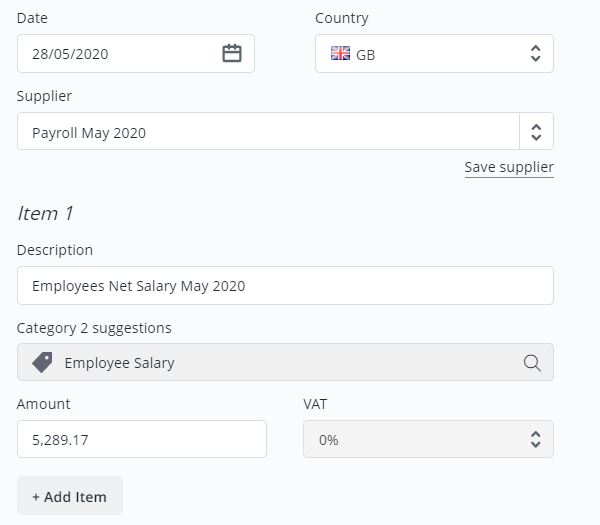
Next, I would input the taxes. I would suggest separating each tax to give you a better understanding of how much is paid for each tax. In this example, I will input income tax and national insurance employer and employee contributions separately.
I would tag income tax under the category ‘Employee Salary Taxes’, and National Insurance under ‘Social Security Salaries Employees’ as well as ‘Social Security Employer’.
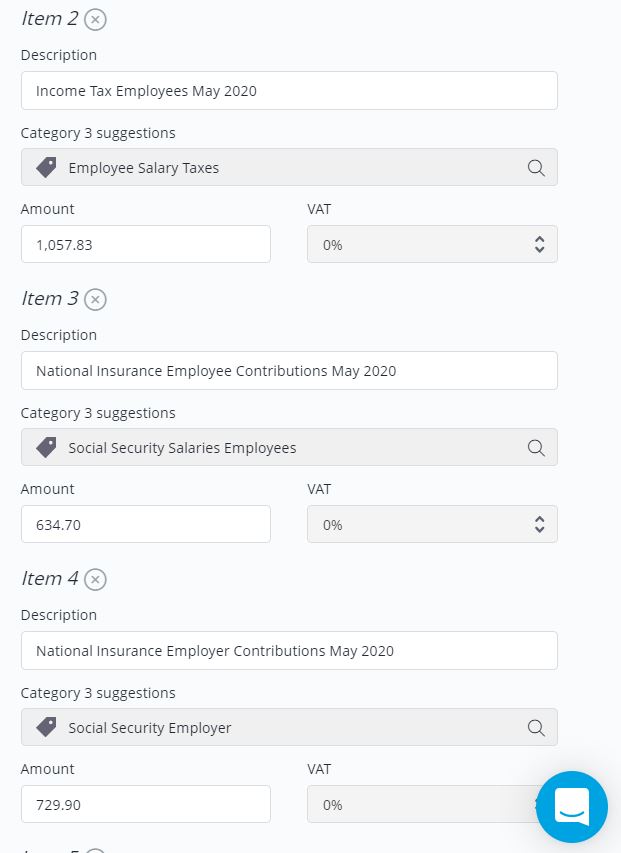
After all of the salaries and taxes have been inputted, I would add any additional information, such as bonuses, commission, sick leave pay, etc. There are several categories to choose from, so just try to be consistent each time you enter payroll expenses.
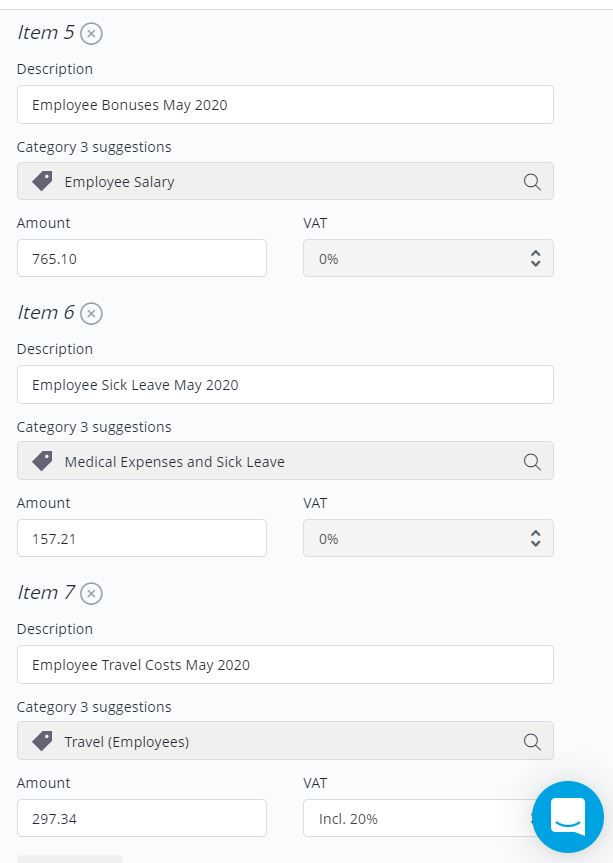
Once everything has been added, and the total at the bottom looks correct, click ‘Save’, and the data will be saved to the cloud. You can also add a document or image to the expense, such as your Full Payment Submission document (from HMRC online), or payslips.
You can then create accounting reports that tell you how much you've spent on employees over the last month, quarter, or year.
If you use any other invoicing software, they will either have a payroll module built-in or use a similar system of recording payroll as an expense.
How do I submit my payroll?
If you are a new business starting out and hiring employees, there are a few steps to follow to set up your payroll.
First, you will need to register as an employer with HMRC and create a PAYE Online account. You will need to register as an employer if you hire at least one employee, or use subcontractor services.
Next, you will need to choose a payroll software to record your employees’ details and calculate their pay. There are several free and paid software that is recognised by HMRC. Generally, if you have more than 10 employees, you will need to pay for the software.
When you issue your payroll, make sure that you keep detailed records of everything for at least 3 years. You should keep records of what you pay your employees, and any taxes, deductions, benefits and leave, as well as tax codes and any reports submitted to HMRC.
If you use payroll software, make sure that the information is saved to the cloud, backed up to another device, or printed to ensure you will not lose any data!
If you hire a new employee, you will need to inform HMRC and submit their details such as their tax code before you issue their first pay.
Before your employees’ payday, you will need to use the payroll software to calculate and create their payslips, and also report it to HMRC in the form of a Full Payment Submission (FPS). This will tell HMRC about the pay and deductions you issued in this pay period.
In the UK, tax months generally run from the 6th of the month to the 5th of the next month. When you issue the FPS to HMRC, this will determine how much you as an employer owes HMRC for tax and National Insurance. This amount must be paid by the 22nd of the month online through your HMRC online account, or by the 19th of the month by post.
If you require more information on how to submit and record your payroll information with HMRC, I would recommend going directly to the UK Government website.
